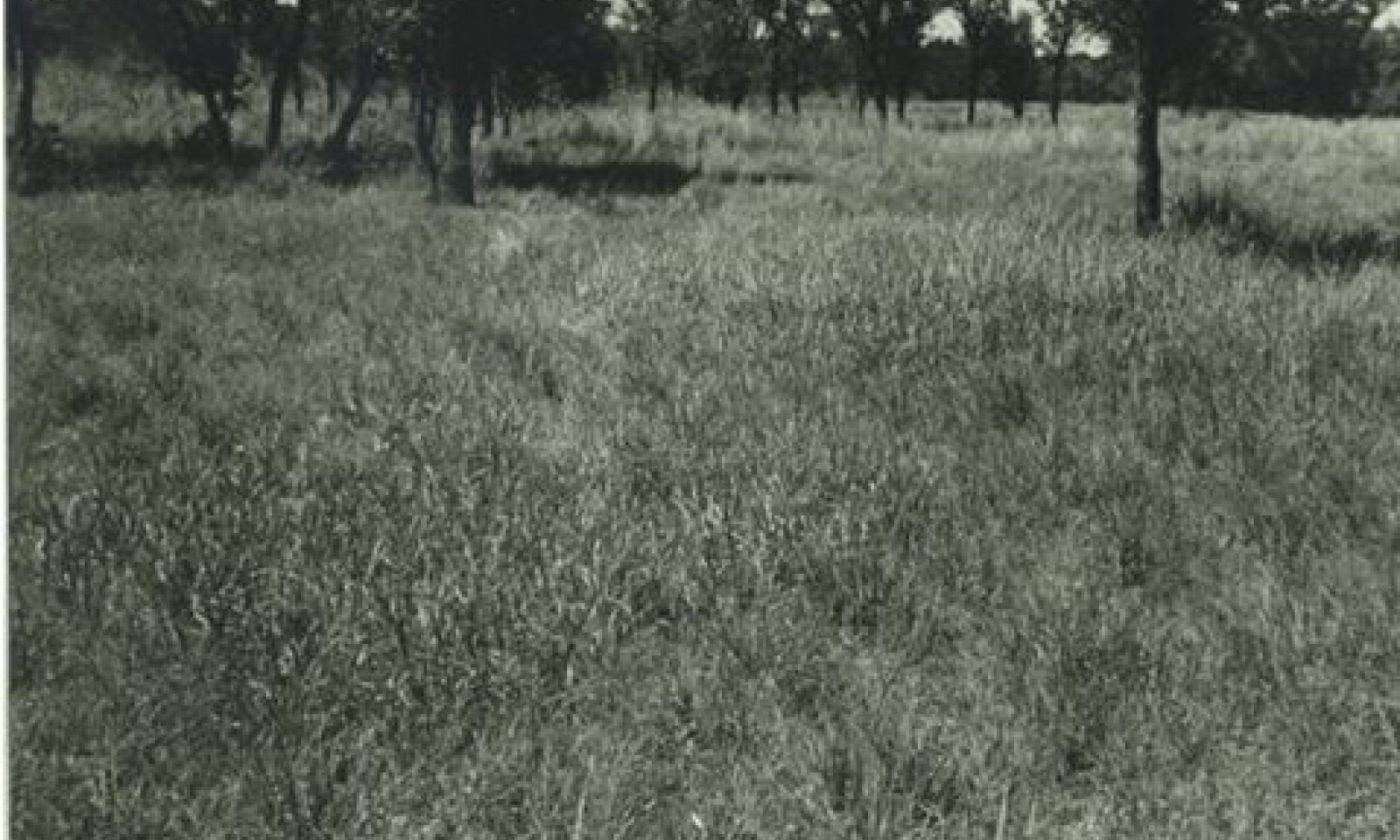

Natural Resources
Conservation Service
Ecological site R081CY357TX
Clay Loam 29-35 PZ
Last updated: 9/19/2023
Accessed: 12/21/2025
General information
Provisional. A provisional ecological site description has undergone quality control and quality assurance review. It contains a working state and transition model and enough information to identify the ecological site.
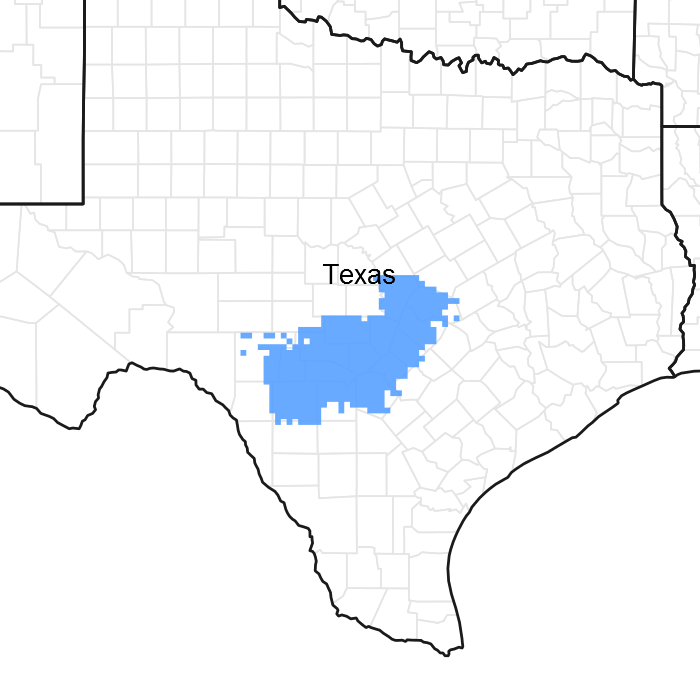
Figure 1. Mapped extent
Areas shown in blue indicate the maximum mapped extent of this ecological site. Other ecological sites likely occur within the highlighted areas. It is also possible for this ecological site to occur outside of highlighted areas if detailed soil survey has not been completed or recently updated.
MLRA notes
Major Land Resource Area (MLRA): 081C–Edwards Plateau, Eastern Part
This area represents the eastern part of the Edwards Plateau region. Limestone ridges and canyons and nearly level to gently sloping valley floors characterize the area. Elevation is 400 feet (120 meters) at the eastern end of the area and increases westward to 2,400 feet (730 meters) on ridges. This area is underlain primarily by limestones in the Glen Rose, Fort Terrett, and Edwards Formations of Cretaceous age. Quaternary alluvium is in river valleys.
Classification relationships
Major Land Resource Area (MLRA) and Land Resource Unit (LRU) (USDA-Natural Resources Conservation Service, 2006)
National Vegetation Classification/Shrubland & Grassland/2C Temperate & Boreal Shrubland and Grassland/M051 Great Plains Mixedgrass Prairie & Shrubland/ G133 Central Great Plains Mixedgrass Prairie Group.
Ecological site concept
These sites occur on moderately deep to deep clay loam soils over limestone. The reference vegetation on these upland sites consists of tallgrasses, numerous forbs, few shrubs and scattered live oak mottes. Without fire or brush management, woody species are likely to increase across the site. Grazing management is key to maintain the reference vegetation.
Associated sites
| R081CY561TX |
Loamy Bottomland 29-35 PZ The Loamy Bottomland ecological site occurs just below the Clay loam site adjacent to the creeks and rivers. |
|---|---|
| R081CY355TX |
Adobe 29-35 PZ The Adobe ecological site is upslope from the clay loam with shallower soils. |
| R081CY360TX |
Low Stony Hill 29-35 PZ The Low Stony Hill ecological site is usually upslope from the clay loam. |
| R081CY574TX |
Shallow 29-35 PZ The shallow ecological site can occur as inclusions but is less productive and can have some surface limestone. |
| R081CY362TX |
Steep Adobe 29-35 PZ The Steep Adobe ecological site is upslope from the clay loam on steeper slopes and has shallower soils. |
Similar sites
| R081CY358TX |
Deep Redland 29-35 PZ The Deep Redland ecological site usually has post oak with soil in shades of red that is slightly acidic to neutral. |
|---|---|
| R081CY561TX |
Loamy Bottomland 29-35 PZ The Loamy Bottomland ecological site normally has a flooding frequency associated with the site. |
Table 1. Dominant plant species
| Tree |
(1) Quercus fusiformis |
|---|---|
| Shrub |
Not specified |
| Herbaceous |
(1) Schizachyrium scoparium |
Physiographic features
This site is located in the 81C, Eastern Edwards Plateau Major Land Resource Area (MLRA). It is classified as an upland site. Slope gradients are mainly less than 3 percent and range from 0 to 8 percent. This site was formed from alluvial loamy and clayey sediments. Elevation of this site ranges from 430 to 1500 feet above mean sea level. This site will receive runoff from Adobe, Steep Adobe, Low Stony Hill, and Shallow ecological sites that normally occur along the site’s boundary.
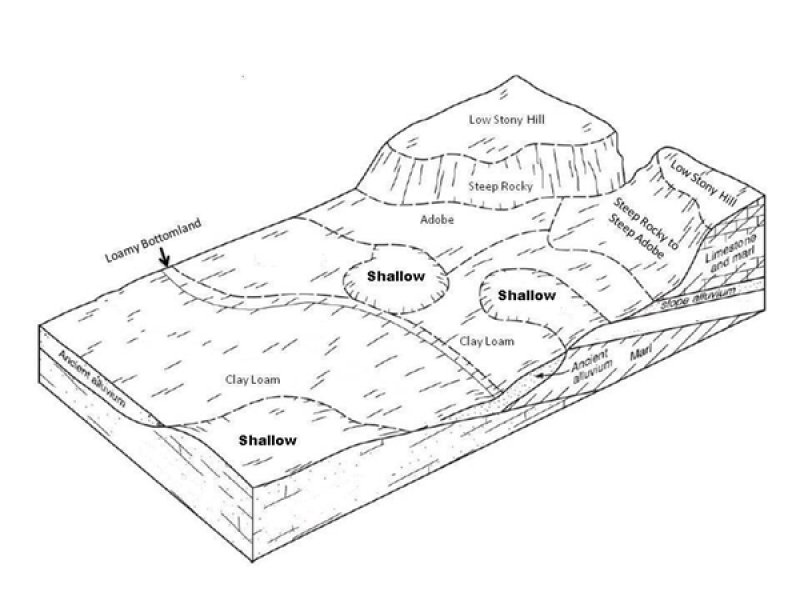
Figure 2. Clay Loam
Table 2. Representative physiographic features
| Landforms |
(1)
Plateau
> Stream terrace
(2) Plateau > Ridge (3) Plateau > Hillslope |
|---|---|
| Runoff class | Low to high |
| Flooding frequency | None |
| Ponding frequency | None |
| Elevation | 430 – 1,500 ft |
| Slope | 1 – 5% |
| Aspect | Aspect is not a significant factor |
Table 3. Representative physiographic features (actual ranges)
| Runoff class | Not specified |
|---|---|
| Flooding frequency | Not specified |
| Ponding frequency | Not specified |
| Elevation | Not specified |
| Slope | 8% |
Climatic features
The climate is humid subtropical and is characterized by hot summers and relatively mild winters. The average first frost should occur around November 15 and the last freeze of the season should occur around March 19.
The average relative humidity in mid-afternoon is about 50 percent. Humidity is higher at night, and the average at dawn is about 80 percent. The sun shines 70 percent of the time possible during the summer and 50 percent in winter. The prevailing wind direction is southeast.
Drought is calculated as 75% below average rainfall. It should be noted that timing of rainfall may be more significant than average rainfall.
Approximately two-thirds of annual rainfall occurs during the April to September period. Rainfall during this period generally falls during thunderstorms, and fairly large amount of rain may fall in a short time. Hurricanes provide another source of extremely high rains in a short time. A review of the rainfall records suggest that rainfall is below “normal” at least 60 percent of the time. Therefore, the erratic nature of the rainfall should be considered when developing any land management plans.
The impact of droughts in the Edwards Plateau cannot be under-estimated. Not only are droughts devastating to the land but also to those that manage the land. Droughts occur roughly every 20 years but not always. A severe drought in 2012 coupled with extreme heat resulted in a die off of juniper over millions of acres as well as other native plants.
Table 4. Representative climatic features
| Frost-free period (characteristic range) | 210-260 days |
|---|---|
| Freeze-free period (characteristic range) | 227-269 days |
| Precipitation total (characteristic range) | 32-37 in |
| Frost-free period (actual range) | 210-260 days |
| Freeze-free period (actual range) | 224-332 days |
| Precipitation total (actual range) | 31-37 in |
| Frost-free period (average) | 235 days |
| Freeze-free period (average) | 257 days |
| Precipitation total (average) | 34 in |
Figure 3. Monthly precipitation range
Figure 4. Monthly minimum temperature range
Figure 5. Monthly maximum temperature range
Figure 6. Monthly average minimum and maximum temperature
Figure 7. Annual precipitation pattern
Figure 8. Annual average temperature pattern
Climate stations used
-
(1) MEDINA 1NE [USC00415742], Medina, TX
-
(2) SAN ANTONIO/SEAWORLD [USC00418169], San Antonio, TX
-
(3) KERRVILLE 3 NNE [USC00414782], Kerrville, TX
-
(4) BLANCO [USC00410832], Blanco, TX
-
(5) CANYON DAM [USC00411429], Canyon Lake, TX
-
(6) BURNET MUNI AP [USW00003999], Burnet, TX
-
(7) AUSTIN GREAT HILLS [USC00410433], Austin, TX
-
(8) GEORGETOWN LAKE [USC00413507], Georgetown, TX
-
(9) PRADE RCH [USC00417232], Leakey, TX
Influencing water features
This being an upland site, it is not influenced by water from a wetland or stream.
Wetland description
N/A
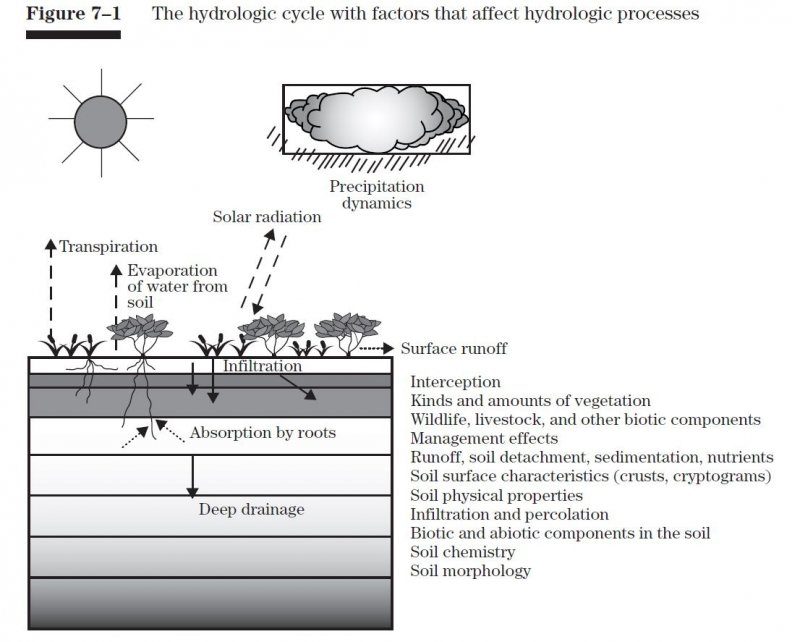
Figure 9.
Soil features
In a representative profile for the Clay Loam ecological site, the soils of this site are dark grayish brown, moderately deep to very deep clays or clay loams. Limestone fragments and rocks sometimes occur in the profile or outcrop on the soil surface, but not to the extent that they impair the production of native vegetation. Plant-soil moisture relationships are good. In healthy condition, rills, gullies, wind-scoured areas, pedestals, and soil compaction layers are not present on the site.
It should be noted that there may be inclusions of other soils that because of mapping scale are not divided out. These may include some shallow soils with sporadic surface limestone fragments typical of the Eckrant series.
The following representative soil series associated with the Clay Loam ecological site are Bolar, Krum, Nuvalde, Pratley, and Volente.
Table 5. Representative soil features
| Parent material |
(1)
Alluvium
–
limestone
|
|---|---|
| Surface texture |
(1) Clay loam (2) Silty clay loam (3) Silty clay |
| Drainage class | Well drained |
| Permeability class | Slow to moderate |
| Depth to restrictive layer | 20 – 80 in |
| Soil depth | 20 – 80 in |
| Surface fragment cover <=3" | 10% |
| Surface fragment cover >3" | 4% |
| Available water capacity (0-40in) |
3.5 – 8.4 in |
| Calcium carbonate equivalent (0-40in) |
70% |
| Electrical conductivity (0-40in) |
2 mmhos/cm |
| Sodium adsorption ratio (0-40in) |
4 |
| Soil reaction (1:1 water) (0-40in) |
7.4 – 8.4 |
| Subsurface fragment volume <=3" (4-40in) |
20% |
| Subsurface fragment volume >3" (4-40in) |
15% |
Ecological dynamics
The information contained in the State and Transition Diagram (STD) and the Ecological Site Description was developed using archeological and historical data, professional experience, and scientific studies. The information presented is representative of a very complex set of plant communities. Not all scenarios or plants are included. Key indicator plants, animals and ecological processes are described to inform land management decisions.
The reference plant community of the Clay Loam ecological site is perceived to be a tallgrass savannah and is a disturbance driven community. Little bluestem (Schizachyrium scoparium), big bluestem (Andropogon gerardii), Indiangrass (Sorghastrum nutans), switchgrass (Panicum virgatum), sideoats grama (Bouteloua curtipendula), and Eastern gamagrass (Tripsacum dactyloides) compose the majority of warm season grasses. The cool season grasses and grasslikes were wildrye (Elymus spp.), Texas wintergrass (Nasella leucotricha), and cedar sedges (Carex spp.). The important woody species would include Texas live oak (Quercus fusiformis), cedar elm (Ulmus crassifolia), and hackberry (Celtis spp.) Numerous perennial forbs were present. A more detailed description of the various plant communities existing on this site follows.
The plant communities of this site are dynamic and vary in relation to grazing, fire, and rainfall. Studies of the pre-European vegetation of the general area suggested 47 percent of the area was wooded (Wills, 2006). Historical records are not specific on the Clay Loam site but do reflect area sightings from the Teran expedition in 1691 of “great quantities of buffaloes” in the area. By 1840 the Bonnell expedition reflected that “buffalo rarely range so far to the south” (Inglis, 1964). Many research studies document the interaction of bison grazing and fire (Fuhlendorf, et al. 2008). Bison would come into an area, graze it down, leave and then not come back for many months or even years. Many times this grazing scheme by buffalo was high impact and followed fire patterns and available natural water. This usually long deferment period allowed the taller grasses and forbs to recover from the high impact bison grazing. This relationship created a diverse landscape.
The accumulation of tall grasses set the stage for naturally occurring fire set by Native Americans for various purposes and by lightning. This site is in an area where spring is reported as the principal fire season (Pyne, 1982). However in the summer, when fuel loads accumulate and dry weather decreases fine fuel moisture, convection storms with their associated lighting suggest a peak of burning occurring every 7 to 35 years (Frost, 1998).
The periodic fires kept Ashe juniper (Juniperus ashei), a non-sprouter, and other woody species suppressed. Ashe juniper may occasionally occur on the site, but not at the level seen today due to its fire sensitivity. The degree of suppression of re-sprouting woody plants would vary in accordance with the type of fire encountered, which resulted in a mosaic of vegetation types within the same site and changing over time. Ashe juniper will increase regardless of grazing. Juniper will establish with grazing and without unless goats are utilized. Goats will eat young juniper and when properly used, are an effective tool to maintain juniper (Taylor, 1997). The main role of excessive grazing relative to juniper is the removal of the fine fuel needed to carry an effective burn.
Ashe juniper, because of its dense low growing foliage, has the ability to retard grass and forb growth. Grass and forb growth can become non-existent under dense juniper canopies. Many times there is a resurgence of the better grasses such as little bluestem and Indiangrass when Ashe juniper is controlled and followed by proper grazing management. Seeds and dormant rootstocks of many plant species are contained in the leaf mulch under the junipers.
The vegetation resulting from periodic high impact grazing and fire would capture all but the heaviest rainfall to soak into the ground. Runoff from high rainfall events that did run off contained little sediment. Most of the rainfall in this climate on this site was used within the rooting zone of the existing plants and seldom percolated beyond the root zone.
Much change in the vegetation on the Clay Loam ecological site has taken place since settlement. The area has been settled by a combination of cultures and each brought their own livestock and management styles in the mid to early 1800s. Early stock growers did not understand the ecological dynamics of the vegetation on the site nor the undependable rainfall.
Continued overgrazing will weaken the plants preferred by grazing animals. These plants will accordingly decrease in abundance and be replaced by those less preferred. Drought will hasten the process. Continued removal of leaf material will replace plants that convert energy efficiently to those that are less efficient. This reduces the overall flow of energy through the system.
The loss of plant cover and litter reduces infiltration, increases evaporation losses, and increases erosion and sediment loss from the site. Soil temperatures without cover can get very hot in the summer and exceed the temperature supporting vibrant biological activity. When this site experiences long term reduced cover, it is then vulnerable to invasion by both native and not native plants such as mesquite (Prosopis glandulosa) or introduced bluestems (Bothriochloa spp.) Anecdotal observations suggest that these opportunistic plants are quick to establish once rainfall comes following droughts. This effect is much more pronounced on improperly grazed ranges. Little bluestem and other valuable plants seem to slowly return to the site once the ecological processes and subsequent soil health are restored.
Currently, cattle, white-tailed deer, horses, and exotic animals are the primary large herbivores. At settlement, large numbers of deer occurred, but as human populations increased (with unregulated harvest) their numbers declined substantially. Eventually, laws and restrictions on deer harvest were put in place which assisted in the recovery of the species. Females were not harvested for several decades following the implementation of hunting laws, which helped create population booms. In addition, suppression of fire favored woody plants which provided additional browse and cover for the deer. Because of their impact on livestock production, large predators such as red wolves (Canis rufus), mountain lions (Felis concolor), black bears (Ursus americanus), and eventually coyotes (Canis latrins) were reduced in numbers or eliminated (Schmidly, 2002).
The screwworm fly (Cochilomyia hominivorax) was essentially eradicated by the mid-1960s, and while this was immensely helpful to the livestock industry, this removed a significant control on deer populations (Teer, Thomas, and Walker, 1965; Bushland, 1985).
Currently, due to the reduction in livestock production and a corresponding increase in land ownership for recreational purposes, predator populations are on the increase. This includes feral hogs (Sus scrofa).
Progressive management of the deer herd, because of their economic importance through lease hunting, has the objective of improving individual deer quality and improving habitat. Managed harvest based on numbers, sex ratios, condition, and monitoring of habitat quality has been effective in managing the deer herd on individual properties. However, across the Edwards Plateau, excess numbers still exist which may lead to habitat degradation and significant die-offs during stress periods such as extended droughts.
The Edwards Plateau is home to a variety of non-indigenous (exotic) ungulates, mostly introduced for hunting (Schmidly, 2002). These animals are important sources of income to some landowners, but as with the white-tailed deer, their populations must be managed to prevent degradation of the habitat for themselves as well as for the diversity of native wildlife in the area. Many other species of medium and small sized mammals, birds, and insects can have significant influences on the plant communities in terms of pollination, herbivory, seed dispersal, and creation of local disturbance patches, all of which contribute to the plant species diversity. Many of the exotic species have the ability to change and modify their diets depending on forage availability. This ability to use such a diverse and broad diet of vegetation may have a direct negative impact on the native wildlife and habitat if they are not properly managed.
State and Transition Diagram:
A State and Transition Diagram for the Clay Loam Ecological Site (R081CY357TX) is depicted in Figure 1. Thorough descriptions of each state, transition, plant community, and pathway follow the model. Experts base this model on available experimental research, field observations, professional consensus, and interpretations. It is likely to change as knowledge increases.
Plant communities will differ across the MLRA because of the naturally occurring variability in weather, soils, and aspect. The Reference Plant Community is not necessarily the management goal; other vegetative states may be desired plant communities as long as the Range Health assessments are in the moderate and above category. The biological processes on this site are complex. Therefore, representative values are presented in a land management context. The species lists are representative and are not botanical descriptions of all species occurring, or potentially occurring, on this site. They are not intended to cover every situation or the full range of conditions, species, and responses for the site.
Both percent species composition by weight and percent canopy cover are described as are other metrics. Most observers find it easier to visualize or estimate percent canopy for woody species (trees and shrubs). Canopy cover can drive the transitions between communities and states because of the influence of shade and interception of rainfall. Species composition by dry weight is used for describing the herbaceous community and the community as a whole. Woody species are included in species composition for the site. Calculating the similarity index requires the use of species composition by dry weight.
The following diagram suggests some pathways that the vegetation on this site might take. There may be other states not shown in the diagram. This information is intended to show what might happen in a given set of circumstances. It does not mean that this would happen the same way in every instance. Local professional guidance should always be sought before pursuing a treatment scenario.
State and transition model
More interactive model formats are also available.
View Interactive Models
Click on state and transition labels to scroll to the respective text
Ecosystem states
| T1A | - | Absence of disturbance and natural regeneration over time coupled with excessive grazing pressure |
|---|---|---|
| T1B | - | Absence of disturbance and natural regeneration over time |
| T1C | - | Removal of woody species, extensive soil disturbance, followed by seeding |
| R2A | - | Reintroduction of natural disturbance regimes |
| T2A | - | Absence of disturbance and natural regeneration over time |
| T2B | - | Removal of woody species, extensive soil disturbance, followed by seeding |
| R2B | - | Reintroduction of natural disturbance regimes |
| T3B | - | Removal of woody species, extensive soil disturbance, followed by seeding |
| T3A | - | Mechanical conversion of juniper to mulch |
State 1 submodel, plant communities
State 2 submodel, plant communities
State 3 submodel, plant communities
State 4 submodel, plant communities
State 5 submodel, plant communities
State 1
Reference
This state is considered to be representative of the natural range of variability under per-Euro settlement conditions. It is characterized by a warm-season, tallgrass savannah with scattered trees. Community phase changes are primarily driven by wildfire, grazing, and climatic fluctuations.
Dominant plant species
-
Texas live oak (Quercus fusiformis), tree
-
little bluestem (Schizachyrium scoparium), grass
-
big bluestem (Andropogon gerardii), grass
Community 1.1
Tall Grass Savannah

Figure 10. Reference Plant Community, Kendall County.
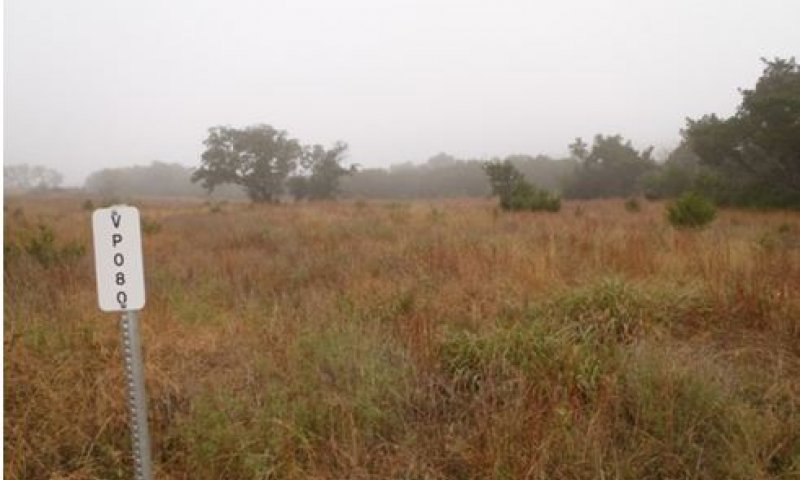
Figure 11. Clay loam ecological site. Kendall County, 1976
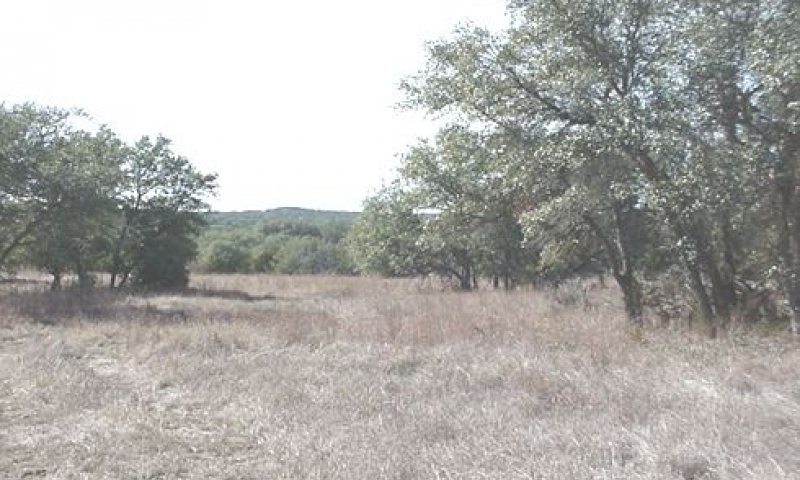
Figure 12. Clay Loam ecological site. Kendall County, Texas
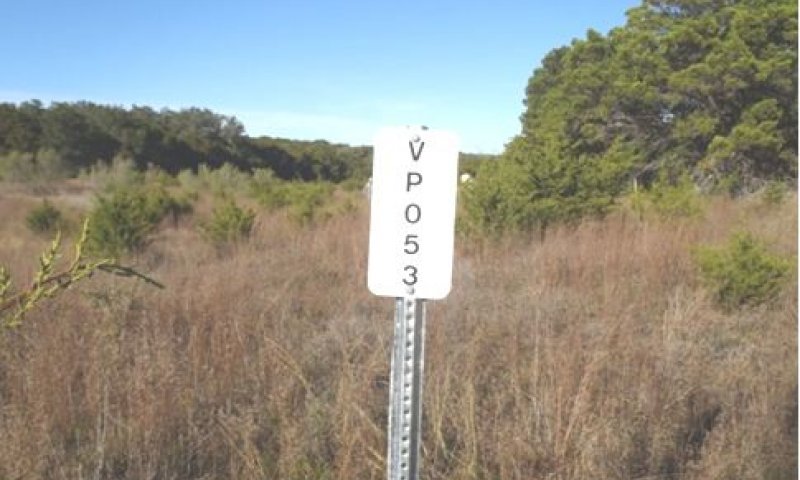
Figure 13. Clay Loam ecological site. Bexar County, Camp Bull
This is the reference or interpretive community for the site. The description is based on early range site descriptions, clipping data, the professional consensus of experienced range specialists, and analysis of field work. Elm and hackberry trees occur along small streams, and Texas live oak trees or motts are widely scattered. Texas live oak can exist as both a tree and as a mott depending upon fire frequency or other disturbance as it is a vigorous root sprouter. Some juniper may occur depending upon the last fire. Estimated vegetative composition by weight is 85-90 percent grass, 5-10 percent forbs, 2-6 percent shrubs, and <2 percent trees. Total canopy cover of woody species is less than 5 percent. Little bluestem dominates the herbaceous plant community. Indiangrass and big bluestem are subdominants and may be locally dominant. Switchgrass and eastern gamagrass occurred in small quantities. Sideoats grama, Texas wintergrass, Texas cupgrass (Eriochloa sericea), silver (Bothriochloa saccharoides), and pinhole bluestem (Bothriochloa barbinodis var. perforata), vine mesquite (Panicum obtusum), and tall/meadow dropseed (Sporobolus compositus) are also prevalent but in lesser amounts. The site grows an abundance of palatable forbs and legumes such as Engelmann daisy (Engelmannia peristenia), orange zexmenia (Wedelia hispida), velvet bundleflower (Desmanthus velutinus), and trailing wildbean (Strophostyles helvola). This plant community is very stable and can withstand short term droughts although production will fluctuate accordingly. If the site is abused by overgrazing of the site with cattle, a reduction of the more palatable tall and mid grasses, forbs, and legumes will occur. Sideoats grama, Texas wintergrass, silver and pinhole bluestem, and buffalograss (Bouteloua dactyloides) will increase. Texas wintergrass, along with a small amount of wildryes (Elymus spp.), often dominates the site and furnishes considerable cool-season forage. The cool season plants will also be more prominent when abundant fall rains occur. Fire on a 5- to 10-year frequency will help suppress shrubs and add to the cycling of minerals and nutrients. Fires prevent excessive buildup of litter. Research on the effects of fire on soil organisms reveal complex results and are ecosystem dependent. Soil fauna may decrease following a burn if the burn leaves the soil bare and not insulated (Wright, 1982). It is anticipated that a burn on this site, leaving some litter on the soil, may initially depress soil fauna but then experience an increase following a burn mainly because the sun warms the ground quicker. This leads to more rapid nutrient cycling and increased production and quality. In general, if burning follows historic fire return intervals, the litter and soil fauna will be sustainable (Scifres, 1980). Grazing has a dual effect in maintaining this grassland. Grazing assists in nutrient cycling by digesting coarse grasses and depositing the digested plants through manure back to the soil surface. However, overgrazing can damage the plant community, create bare ground, and remove any opportunity for burning. Wildlife species such as birds and small mammals as well as livestock transport a variety of seeds onto the site. Shrubs will begin to establish under perches and cover for wildlife which is a place for new seedlings to establish. Once this begins to happen, the community is increasingly at risk of change. The plant community can be restored if an integrated regime of fire, maintenance brush, and proper grazing is completed. If these disturbances are not present, the 1.1 Tallgrass Savannah plant community will shift to the 1.2 Mid/Tallgrass Savannah plant community. This is within a normal range of variability for this site but if left long enough without the disturbances, the 1.2 Mid/Tallgrass Savannah plant community will transition into the Shrubland community (3) over time. If mechanical or chemical brush management were applied successfully, this community could also exist as an open, native, tallgrass prairie until the shrubs/trees inevitably reestablish. Continued mechanical or chemical suppression treatments would be needed in this case.
Figure 14. Annual production by plant type (representative values) or group (midpoint values)
Table 6. Annual production by plant type
| Plant type | Low (lb/acre) |
Representative value (lb/acre) |
High (lb/acre) |
|---|---|---|---|
| Grass/Grasslike | 2380 | 2975 | 3650 |
| Forb | 224 | 280 | 350 |
| Shrub/Vine | 140 | 175 | 215 |
| Tree | 56 | 70 | 85 |
| Total | 2800 | 3500 | 4300 |
Table 7. Ground cover
| Tree foliar cover | 0% |
|---|---|
| Shrub/vine/liana foliar cover | 0% |
| Grass/grasslike foliar cover | 1-25% |
| Forb foliar cover | 0% |
| Non-vascular plants | 0% |
| Biological crusts | 0% |
| Litter | 90-100% |
| Surface fragments >0.25" and <=3" | 0% |
| Surface fragments >3" | 0% |
| Bedrock | 0% |
| Water | 0% |
| Bare ground | 0-10% |
Table 8. Soil surface cover
| Tree basal cover | 1-10% |
|---|---|
| Shrub/vine/liana basal cover | 1-5% |
| Grass/grasslike basal cover | 10-25% |
| Forb basal cover | 1-10% |
| Non-vascular plants | 0% |
| Biological crusts | 0% |
| Litter | 0% |
| Surface fragments >0.25" and <=3" | 0% |
| Surface fragments >3" | 0% |
| Bedrock | 0% |
| Water | 0% |
| Bare ground | 0% |
Table 9. Canopy structure (% cover)
| Height Above Ground (ft) | Tree | Shrub/Vine | Grass/ Grasslike |
Forb |
|---|---|---|---|---|
| <0.5 | – | – | – | – |
| >0.5 <= 1 | – | – | 10-20% | 0-5% |
| >1 <= 2 | – | – | 10-20% | 5-45% |
| >2 <= 4.5 | – | 0-5% | 0-4% | – |
| >4.5 <= 13 | 0-5% | – | – | – |
| >13 <= 40 | – | – | – | – |
| >40 <= 80 | – | – | – | – |
| >80 <= 120 | – | – | – | – |
| >120 | – | – | – | – |
Figure 15. Plant community growth curve (percent production by month). TX3772, Hardwood/Grass Community. Hardwood trees with declining grass species..
| Jan | Feb | Mar | Apr | May | Jun | Jul | Aug | Sep | Oct | Nov | Dec |
|---|---|---|---|---|---|---|---|---|---|---|---|
| J | F | M | A | M | J | J | A | S | O | N | D |
| 4 | 5 | 7 | 12 | 20 | 13 | 5 | 4 | 13 | 7 | 5 | 5 |
Community 1.2
Mid/tallgrass Savannah Community
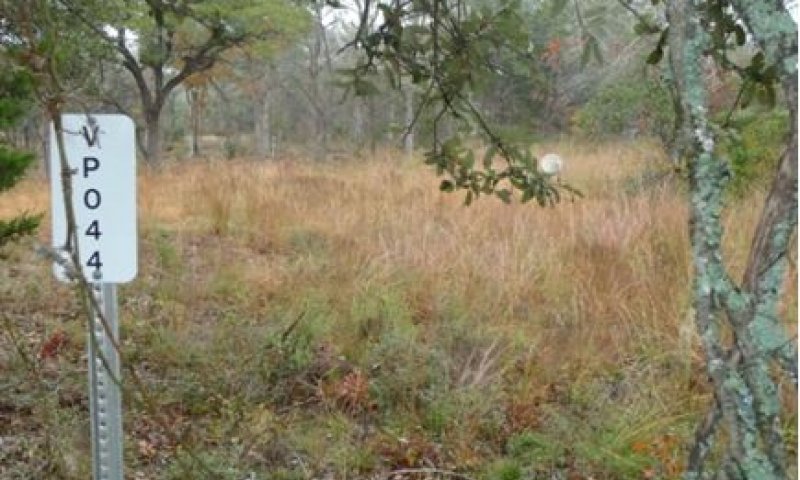
Figure 16. . Clay Loam ecological site. Bexar County
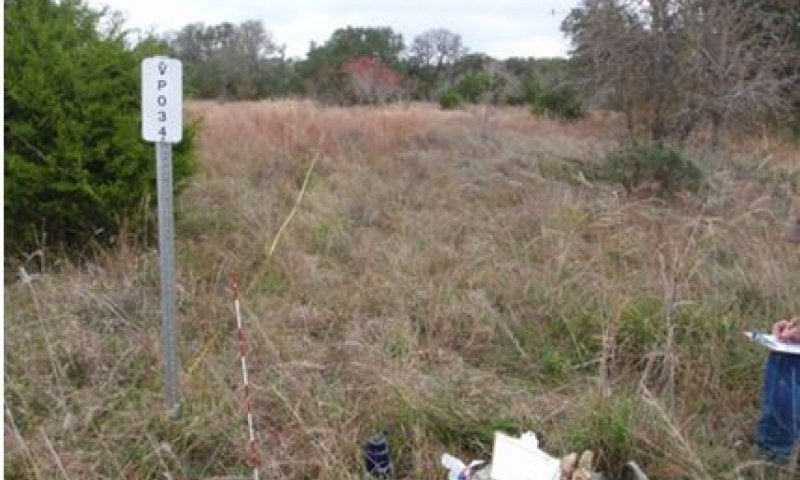
Figure 17. Clay Loam ecological site. Bexar County
The data for this plant community comes from the analysis of field data along with professional consensus of experienced range trained individuals. This plant community occurs with yearlong grazing by large herbivores without the application of fire or brush management practices. However a threshold has not been crossed. With management, this community will remain very similar to the reference plant community. It represents the variability within the plant community that fluctuates from events like short term droughts or heavy grazing. Defoliation reduces energy for tall grasses and they are reduced in the plant community. This reduction in tall grasses allows increases of mid grasses such as sideoats grama, tall/meadow dropseed, plains lovegrass, and woody plants such as mesquite, juniper, and pricklypear. Cedar elm (Ulmus crassifolia), bumelia (Sideroxylon lanuginosum), and hackberry also start to increase in density and stature. Texas wintergrass and cedar sedge increases as brush canopy increases. They are shade tolerant and most of their growth occurs during the cool season when brush has lost its leaves. This plant community consists generally of a 5 to 15 percent canopy of woody plants. The hydrologic cycle is basically intact although the shift to cool season plants and more shrubs and trees will change the time of year soil moisture is used and increases some losses through entrapment. The soil is intact and stable relative to erosion. The Mid and Tallgrass Prairie Community (1.2) can revert back to a plant community very similar to the Reference Plant Community (1.1) as there are sufficient remnants of tall grasses and forbs for a response. An integrated approach using tools such as selective brush management, prescribed burning, and/or prescribed grazing is needed to maintain this community or restore it to the Reference Plant Community (1.1) if that is the goal. Deferment from grazing alone will not fully shift this plant community back to the Reference Plant Community (1.1) because of the increase of woody plants and the canopy that fosters cool season plants. However, deferment does preserve fuel load that can be used for prescribed burning to help maintain the plant community. Without brush management, prescribed burning, and/or prescribed grazing, this plant community would continue to shift toward the Short and Midgrass Community (2) or Shrubland Community (3).
Figure 18. Annual production by plant type (representative values) or group (midpoint values)
Table 10. Annual production by plant type
| Plant type | Low (lb/acre) |
Representative value (lb/acre) |
High (lb/acre) |
|---|---|---|---|
| Grass/Grasslike | 2100 | 2600 | 3300 |
| Forb | 225 | 350 | 400 |
| Tree | 280 | 350 | 400 |
| Shrub/Vine | 140 | 175 | 200 |
| Total | 2745 | 3475 | 4300 |
Table 11. Ground cover
| Tree foliar cover | 0-10% |
|---|---|
| Shrub/vine/liana foliar cover | 0-5% |
| Grass/grasslike foliar cover | 10-15% |
| Forb foliar cover | 5-10% |
| Non-vascular plants | 0% |
| Biological crusts | 0% |
| Litter | 60-90% |
| Surface fragments >0.25" and <=3" | 0% |
| Surface fragments >3" | 0% |
| Bedrock | 0% |
| Water | 0% |
| Bare ground | 0-10% |
Table 12. Canopy structure (% cover)
| Height Above Ground (ft) | Tree | Shrub/Vine | Grass/ Grasslike |
Forb |
|---|---|---|---|---|
| <0.5 | – | – | – | – |
| >0.5 <= 1 | – | – | 10-20% | 0-5% |
| >1 <= 2 | – | 5-10% | 10-20% | 5-45% |
| >2 <= 4.5 | – | – | 0-5% | – |
| >4.5 <= 13 | 5-10% | – | – | – |
| >13 <= 40 | – | – | – | – |
| >40 <= 80 | – | – | – | – |
| >80 <= 120 | – | – | – | – |
| >120 | – | – | – | – |
Figure 19. Plant community growth curve (percent production by month). TX3772, Hardwood/Grass Community. Hardwood trees with declining grass species..
| Jan | Feb | Mar | Apr | May | Jun | Jul | Aug | Sep | Oct | Nov | Dec |
|---|---|---|---|---|---|---|---|---|---|---|---|
| J | F | M | A | M | J | J | A | S | O | N | D |
| 4 | 5 | 7 | 12 | 20 | 13 | 5 | 4 | 13 | 7 | 5 | 5 |
Pathway 1.1A
Community 1.1 to 1.2


Continuous season-long grazing at moderate to heavy stocking rate can suppress tall grasses. This can be a short term situation within the natural variation of the community. Removal of fire and the lack of brush management, as well as adverse weather, contribute to the change in the 1.1 plant community to the 1.2.
Pathway 1.2A
Community 1.2 to 1.1


Restoring ecological processes such as prescribed grazing and prescribed fire aid in the recovery. Integrated brush management such as Individual Plant Treatment will also speed the restoration.
State 2
Shortgrass/Tree State
This state is characterized by a shift the dominant functional and structural groups along with changes in hydrologic cycling. Cool-season herbaceous species dominate the understory and runoff, infiltration, and soil moisture are impacted by increased canopy of woody species.
Dominant plant species
-
Ashe's juniper (Juniperus ashei), tree
-
Texas wintergrass (Nassella leucotricha), grass
Community 2.1
Short/midgrass Savannah Community
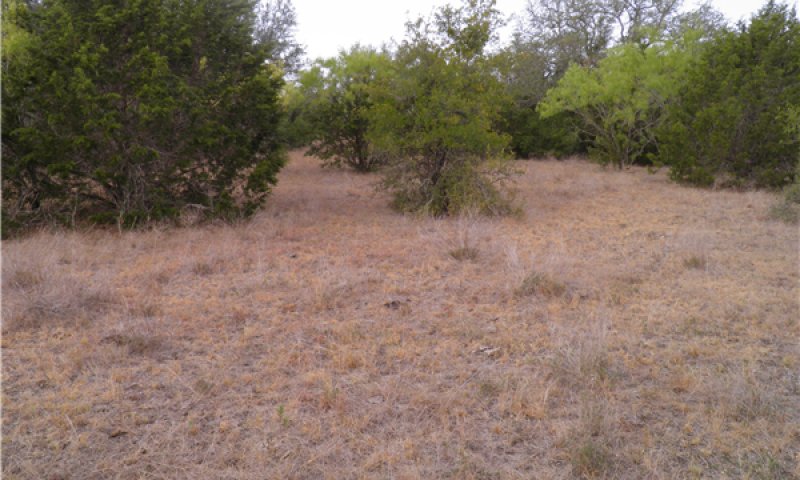
Figure 20. Clay Loam Site, Blanco co.
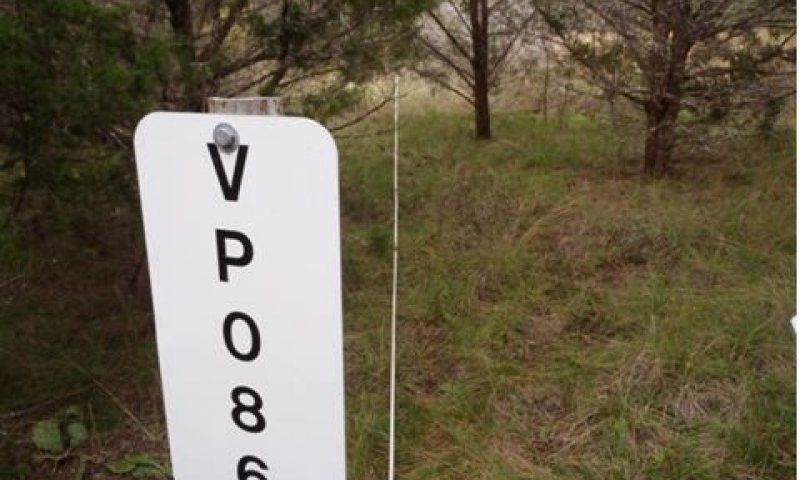
Figure 21. Clay Loam ecological site. Bexar County
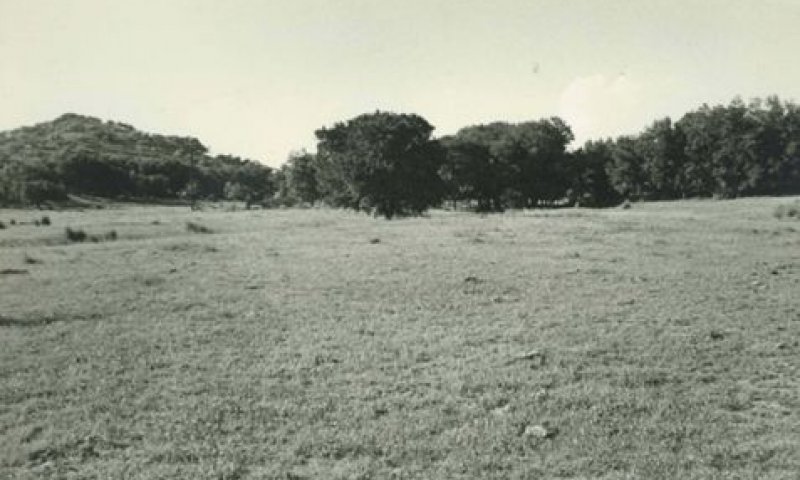
Figure 22. Clay Loam ecological site. Kendall County
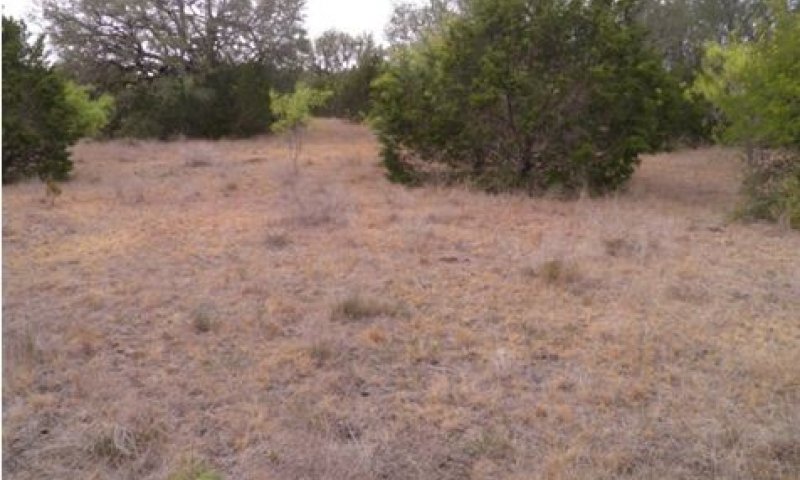
Figure 23. Clay Loam ecological site, Krum Soil
The description for this plant community is derived from analysis of limited field data and the professional consensus of range trained individuals. The Shortgrass/Tree Community (2.1) consists of short and midgrasses with 15 to 30 percent overstory canopy of woody plants. It generally has a savannah-like appearance and is low on herbaceous plant diversity. As this community ages, brush canopy along with grasses such as Texas wintergrass, threeawn, and annuals continue to increase. Warm-season perennial tall grasses such as Indiangrass and switchgrass have all but disappeared as have many of the warm season mid grasses such as sideoats grama and plains lovegrass. Continuous abuse by mixed classes of domestic livestock has facilitated the shift. Abusive grazing has suppressed the original plants and also removed any fuel loading that would support a prescribed burn. Subsequently, the energy flow now is transformed into the overstory of woody plants and the cool-season plants and small shrubs in the understory. Some rainfall is trapped in the foliage of the overstory and evaporates but some also reaches the soil via stem flow. This stem flow enriches the Texas wintergrass and sedges that occupy the understory. Many times the interspaces in the canopy openings are occupied by curly mesquite, buffalograss, and other short grasses. During drought conditions, these interspaces can become bare and providing the opportunity for some surface movement of soil and increased runoff. Much of the forb population is cool-season annuals such as plantain (Plantago spp.) and common broomweed (Amphiachyris dracunculoides). If the management goal is to restore this plant community back to something resembling the reference community, reduction of the canopy of woody plants is needed and possibly reintroduction of seeds representative of the reference plant community. A field investigation is needed to evaluate the necessity for seeding although seeding can speed up the recovery and increase diversity. Tools that restore the restore the energy flow back to these plants and restore the hydrologic cycle include an integrated approach using brush management, fire, and prescribed grazing. It is possible to restore this plant community to something similar to the reference plant community but very difficult if not impossible to fully restore because of lost plant species having limited or no seed source in the market place. It will take many years to fully restore the soil health back to the reference condition. Even though this plant community is very stable, over time other small shrubs and cactus will populate the understory being brought to the site via birds, small mammals, feral hogs, and livestock. Therefore, over time and without treatment, the site will shift toward more dense stands of brush containing both an overstory and a midstory. The main driver to maintain this community is livestock grazing; particularly with sheep and goats having a preference for small shrubs to keep the understory open. Fire can be used as well but the use of fire with a cool season understory is limited. Wildlife browsers generally do not exert sufficient browsing pressure to maintain a savannah on this particular site. If livestock are removed or if grazed only with cattle, a change to the Shrubland/Tree State (3) may occur within 10 to 20 years unless remedial action is taken. Deferment alone will not accomplish any restoration and may well increase the rate of shrub understory establishment.
Figure 24. Annual production by plant type (representative values) or group (midpoint values)
Table 13. Annual production by plant type
| Plant type | Low (lb/acre) |
Representative value (lb/acre) |
High (lb/acre) |
|---|---|---|---|
| Grass/Grasslike | 1650 | 2100 | 2600 |
| Tree | 700 | 875 | 1000 |
| Shrub/Vine | 300 | 350 | 500 |
| Forb | 150 | 175 | 200 |
| Total | 2800 | 3500 | 4300 |
Table 14. Ground cover
| Tree foliar cover | 0-10% |
|---|---|
| Shrub/vine/liana foliar cover | 0-10% |
| Grass/grasslike foliar cover | 10-40% |
| Forb foliar cover | 5-15% |
| Non-vascular plants | 0% |
| Biological crusts | 0% |
| Litter | 75-100% |
| Surface fragments >0.25" and <=3" | 1-5% |
| Surface fragments >3" | 0% |
| Bedrock | 0% |
| Water | 0% |
| Bare ground | 0-10% |
Table 15. Soil surface cover
| Tree basal cover | 0% |
|---|---|
| Shrub/vine/liana basal cover | 0% |
| Grass/grasslike basal cover | 0% |
| Forb basal cover | 0% |
| Non-vascular plants | 0% |
| Biological crusts | 0% |
| Litter | 2-13% |
| Surface fragments >0.25" and <=3" | 0% |
| Surface fragments >3" | 0% |
| Bedrock | 0% |
| Water | 0% |
| Bare ground | 0% |
Table 16. Woody ground cover
| Downed wood, fine-small (<0.40" diameter; 1-hour fuels) | – |
|---|---|
| Downed wood, fine-medium (0.40-0.99" diameter; 10-hour fuels) | 2-8% N* |
| Downed wood, fine-large (1.00-2.99" diameter; 100-hour fuels) | – |
| Downed wood, coarse-small (3.00-8.99" diameter; 1,000-hour fuels) | – |
| Downed wood, coarse-large (>9.00" diameter; 10,000-hour fuels) | – |
| Tree snags** (hard***) | – |
| Tree snags** (soft***) | – |
| Tree snag count** (hard***) | |
| Tree snag count** (hard***) |
* Decomposition Classes: N - no or little integration with the soil surface; I - partial to nearly full integration with the soil surface.
** >10.16cm diameter at 1.3716m above ground and >1.8288m height--if less diameter OR height use applicable down wood type; for pinyon and juniper, use 0.3048m above ground.
*** Hard - tree is dead with most or all of bark intact; Soft - most of bark has sloughed off.
Table 17. Canopy structure (% cover)
| Height Above Ground (ft) | Tree | Shrub/Vine | Grass/ Grasslike |
Forb |
|---|---|---|---|---|
| <0.5 | – | – | 1-3% | 0-1% |
| >0.5 <= 1 | – | 1-3% | 10-30% | 1-3% |
| >1 <= 2 | – | 3-5% | 10-40% | 0-5% |
| >2 <= 4.5 | 0-10% | 3-5% | 0-5% | – |
| >4.5 <= 13 | 5-25% | – | – | – |
| >13 <= 40 | 5-20% | – | – | – |
| >40 <= 80 | – | – | – | – |
| >80 <= 120 | – | – | – | – |
| >120 | – | – | – | – |
Figure 25. Plant community growth curve (percent production by month). TX3784, Short Midgrass Savannah. Short and mid grasses in a savannah setting..
| Jan | Feb | Mar | Apr | May | Jun | Jul | Aug | Sep | Oct | Nov | Dec |
|---|---|---|---|---|---|---|---|---|---|---|---|
| J | F | M | A | M | J | J | A | S | O | N | D |
| 3 | 3 | 5 | 13 | 22 | 15 | 5 | 3 | 15 | 7 | 5 | 4 |
State 3
Shrubland/Tree State
This state is characterized by the dominance woody plants, reduced herbaceous understory, and absence of warm-season species. Hydrologic cycling, nutrient cycling, and energy transfer are being controlled by juniper and woody canopy.
Dominant plant species
-
Ashe's juniper (Juniperus ashei), tree
-
honey mesquite (Prosopis glandulosa), tree
-
oak (Quercus), tree
Community 3.1
Woodland/Shortgrass Community
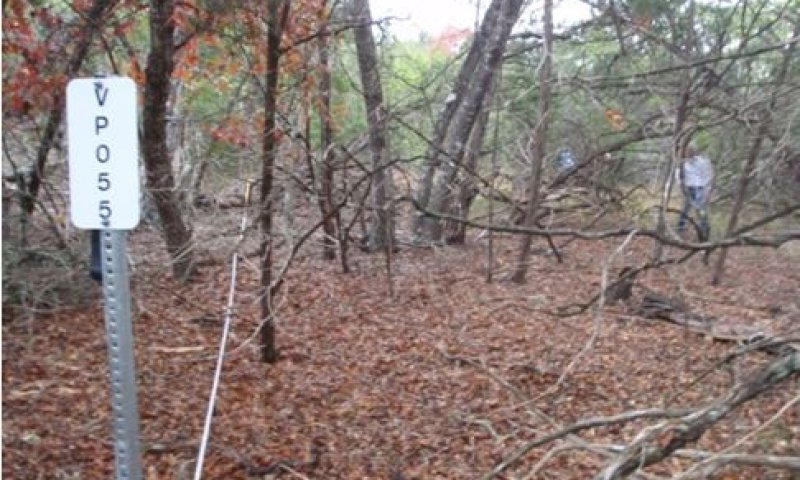
Figure 26. Clay Loam ecological site. Bexar County
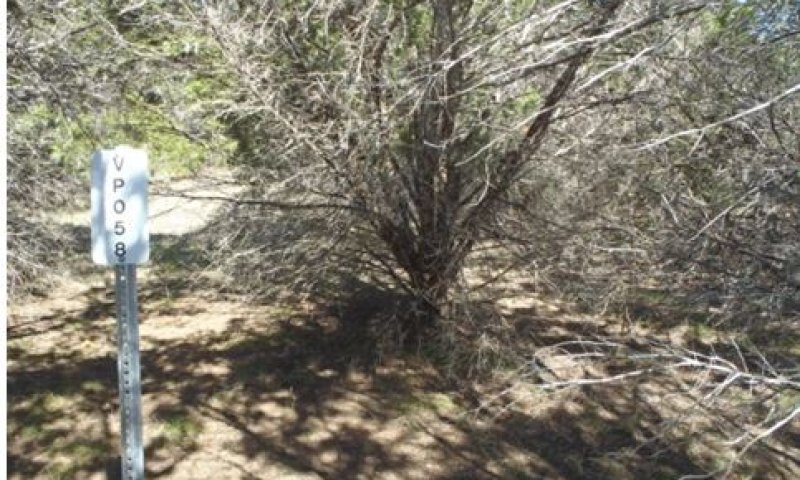
Figure 27. Clay Loam ecological site. Bexar County
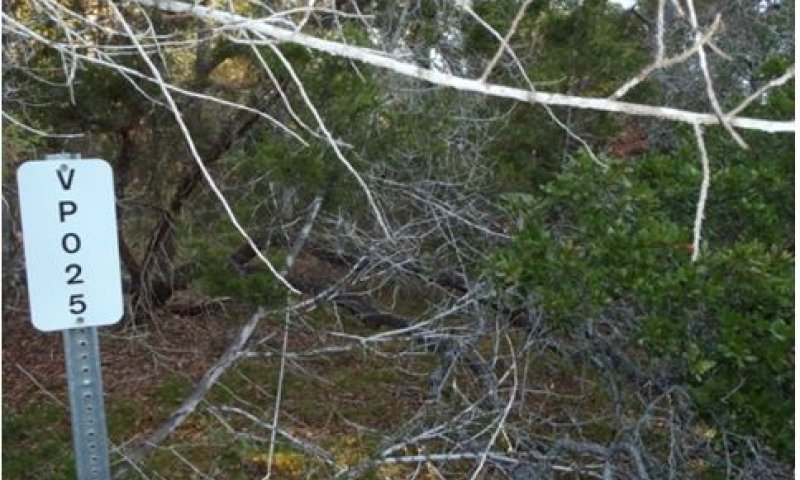
Figure 28. Clay Loam ecological site. Bexar County
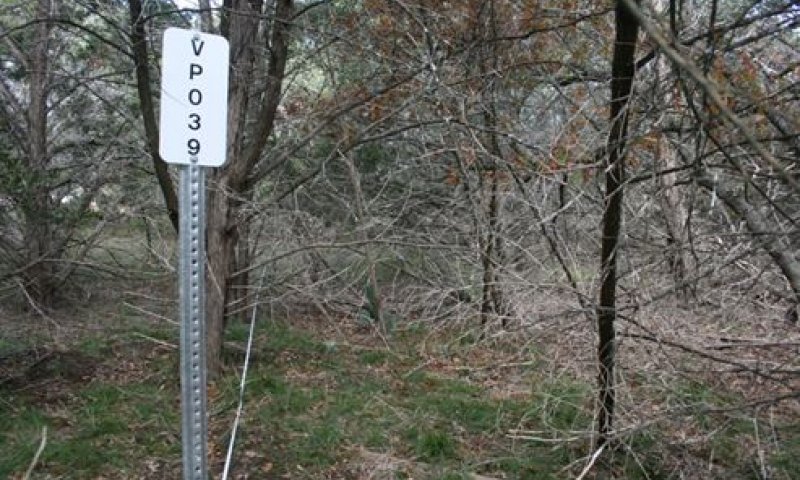
Figure 29. Clay Loam ecological site. Bexar County
This Woodland/Shortgrass Community (3.1) represents the crossing of a threshold and is a very stable plant community having greater than 25 percent woody canopy dominated by mesquite, oak, and/or juniper with a midstory of shrubs. These shrubs may include algerita (Mahonia trilobata), ephedra (Ephedra spp.), tasijillo (Cylindropuntia leptocaulis), prickly pear (Opuntia spp.), and a diversity of others. This plant community formed when livestock grazing and fire have been removed for a long time; especially when sheep and goats are removed. (This plant community can actually develop from any of the other plant communities given enough time when all management activities cease.) Other species present are elm, hackberry, and live oak. The herbaceous understory is almost non-existent. Shade tolerant species such as Texas wintergrass and cedar sedge are the main herbaceous plants. When the canopy of juniper increases toward a cedar break type community most warm-season grasses have disappeared. Full restoration back to the Reference Plant Community is doubtful and requires the significant intervention of many tools over time to even recover to a resemblance of the Reference Community. The overstory entraps as much as 25 percent of the rainfall (Thurow, 1997) which then evaporates without entering the soil. Most energy is absorbed by the woody plants with some being absorbed by the cool-season herbaceous understory. The soil is covered and exhibits little erosion except for some movement as water flows under the understory. In this case terracettes and litter dams will be observed. Fire is a very limited option for this community so mechanical/chemical tools are needed. Depending upon the past management, it is doubtful that many reference plant community seeds exist for recovery, so seeding may be needed. Because of the overstory canopy, the amount of grass cover is greatly reduced which in turn reduces forage/fine fuel production. Seeding can be used in conjunction with mechanical management.
Figure 30. Annual production by plant type (representative values) or group (midpoint values)
Table 18. Annual production by plant type
| Plant type | Low (lb/acre) |
Representative value (lb/acre) |
High (lb/acre) |
|---|---|---|---|
| Tree | 1800 | 2275 | 2795 |
| Shrub/Vine | 560 | 700 | 860 |
| Grass/Grasslike | 280 | 350 | 400 |
| Forb | 150 | 175 | 200 |
| Total | 2790 | 3500 | 4255 |
Table 19. Ground cover
| Tree foliar cover | 50-100% |
|---|---|
| Shrub/vine/liana foliar cover | 10-35% |
| Grass/grasslike foliar cover | 2-10% |
| Forb foliar cover | 1-5% |
| Non-vascular plants | 0% |
| Biological crusts | 0% |
| Litter | 75-100% |
| Surface fragments >0.25" and <=3" | 1-5% |
| Surface fragments >3" | 0% |
| Bedrock | 0% |
| Water | 0% |
| Bare ground | 0-10% |
Table 20. Soil surface cover
| Tree basal cover | 0% |
|---|---|
| Shrub/vine/liana basal cover | 0% |
| Grass/grasslike basal cover | 0% |
| Forb basal cover | 0% |
| Non-vascular plants | 0% |
| Biological crusts | 0% |
| Litter | 18-35% |
| Surface fragments >0.25" and <=3" | 0% |
| Surface fragments >3" | 0% |
| Bedrock | 0% |
| Water | 0% |
| Bare ground | 0% |
Table 21. Woody ground cover
| Downed wood, fine-small (<0.40" diameter; 1-hour fuels) | – |
|---|---|
| Downed wood, fine-medium (0.40-0.99" diameter; 10-hour fuels) | 15-20% N* |
| Downed wood, fine-large (1.00-2.99" diameter; 100-hour fuels) | 1-5% N* |
| Downed wood, coarse-small (3.00-8.99" diameter; 1,000-hour fuels) | 1-5% N* |
| Downed wood, coarse-large (>9.00" diameter; 10,000-hour fuels) | 1-5% N* |
| Tree snags** (hard***) | – |
| Tree snags** (soft***) | – |
| Tree snag count** (hard***) | |
| Tree snag count** (hard***) |
* Decomposition Classes: N - no or little integration with the soil surface; I - partial to nearly full integration with the soil surface.
** >10.16cm diameter at 1.3716m above ground and >1.8288m height--if less diameter OR height use applicable down wood type; for pinyon and juniper, use 0.3048m above ground.
*** Hard - tree is dead with most or all of bark intact; Soft - most of bark has sloughed off.
Table 22. Canopy structure (% cover)
| Height Above Ground (ft) | Tree | Shrub/Vine | Grass/ Grasslike |
Forb |
|---|---|---|---|---|
| <0.5 | – | – | 0-3% | 0-1% |
| >0.5 <= 1 | – | 1-3% | 0-5% | 0-3% |
| >1 <= 2 | – | 3-10% | 0-10% | 0-5% |
| >2 <= 4.5 | 10-25% | 5-20% | – | – |
| >4.5 <= 13 | 40-60% | – | – | – |
| >13 <= 40 | 5-20% | – | – | – |
| >40 <= 80 | – | – | – | – |
| >80 <= 120 | – | – | – | – |
| >120 | – | – | – | – |
Figure 31. Plant community growth curve (percent production by month). TX3767, Juniper Woodland. Invasion of Ashe Juniper encroaching open grassland..
| Jan | Feb | Mar | Apr | May | Jun | Jul | Aug | Sep | Oct | Nov | Dec |
|---|---|---|---|---|---|---|---|---|---|---|---|
| J | F | M | A | M | J | J | A | S | O | N | D |
| 2 | 3 | 10 | 15 | 20 | 18 | 5 | 4 | 10 | 7 | 4 | 2 |
State 4
Converted Land State
This state is characterized by extensive soil disturbance, followed by reseeding with native or exotic species or a combination. Species diversity and site resilience has been reduced. Depending on previous land use soil structure may be deteriorated, many soil organisms are missing and the site is at-risk of soil erosion.
Dominant plant species
-
Johnsongrass (Sorghum halepense), grass
-
beardgrass (Bothriochloa), grass
-
Bermudagrass (Cynodon dactylon), grass
Community 4.1
Converted Land Community
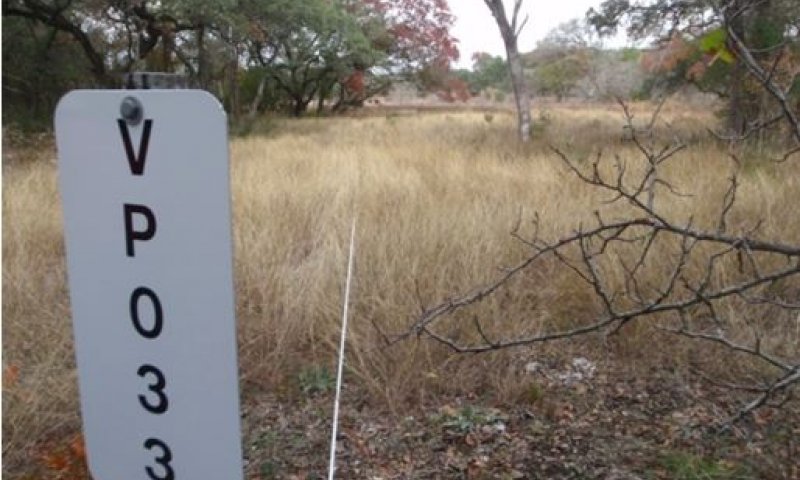
Figure 32. Clay Loam ecological site. Bexar County
This community is usually the result of mechanical brush control and range planting using a mixture of native grass species. An introduced species may be a part of the seed mixture, some of which can be invasive. Some invasive species are very abundant in the region and can be introduced by equipment, free roaming animals, hay, and means other than range planting. It should be understood however that in some cases introduced grasses can serve part of the same functionality in terms of soil protection and hydrologic characteristic as do natives. Some introduced species, such as kleingrass are not as prone to dominance as are the introduced bluestems. Once invasive grasses have established dominance, restoration to the reference plant community is impractical. If there has been past tillage, the soil heath has deteriorated and the native seed source lost. It will take a long time (if ever) for this state to again reach the reference state. Recovery will involve the use of knock-down herbicides over time as well as replanting of native seeds but even then once they are there, many of the introduced bluestems are persistent. If there is tillage along with crop production and abandonment, this plant community will shift to the 4.2 Abandoned Land Community.
Figure 33. Annual production by plant type (representative values) or group (midpoint values)
Table 23. Annual production by plant type
| Plant type | Low (lb/acre) |
Representative value (lb/acre) |
High (lb/acre) |
|---|---|---|---|
| Grass/Grasslike | 2000 | 2400 | 3200 |
| Tree | 250 | 300 | 400 |
| Forb | 125 | 150 | 200 |
| Shrub/Vine | 125 | 150 | 200 |
| Total | 2500 | 3000 | 4000 |
Table 24. Ground cover
| Tree foliar cover | 0-3% |
|---|---|
| Shrub/vine/liana foliar cover | 0-5% |
| Grass/grasslike foliar cover | 10-45% |
| Forb foliar cover | 1-5% |
| Non-vascular plants | 0% |
| Biological crusts | 0% |
| Litter | 70-100% |
| Surface fragments >0.25" and <=3" | 0% |
| Surface fragments >3" | 0% |
| Bedrock | 0% |
| Water | 0% |
| Bare ground | 0-1% |
Table 25. Canopy structure (% cover)
| Height Above Ground (ft) | Tree | Shrub/Vine | Grass/ Grasslike |
Forb |
|---|---|---|---|---|
| <0.5 | – | – | 10-15% | 0-1% |
| >0.5 <= 1 | – | – | 10-25% | 1-3% |
| >1 <= 2 | – | – | 40-60% | 0-5% |
| >2 <= 4.5 | 0-5% | 0-5% | 10-20% | 0-5% |
| >4.5 <= 13 | 0-5% | – | – | – |
| >13 <= 40 | – | – | – | – |
| >40 <= 80 | – | – | – | – |
| >80 <= 120 | – | – | – | – |
| >120 | – | – | – | – |
Figure 34. Plant community growth curve (percent production by month). TX3769, Open Grassland with Juniper. Open Grassland with Juniper Encroachment having warm season grasses with minor cool season influence..
| Jan | Feb | Mar | Apr | May | Jun | Jul | Aug | Sep | Oct | Nov | Dec |
|---|---|---|---|---|---|---|---|---|---|---|---|
| J | F | M | A | M | J | J | A | S | O | N | D |
| 1 | 1 | 5 | 15 | 25 | 20 | 7 | 5 | 13 | 5 | 2 | 1 |
Community 4.2
Abandoned Land Community
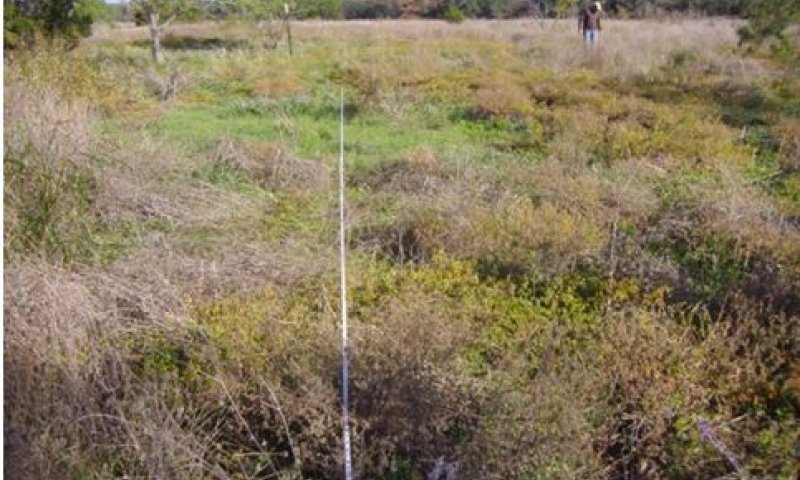
Figure 35. Clay Loam ecological site. Bexar County
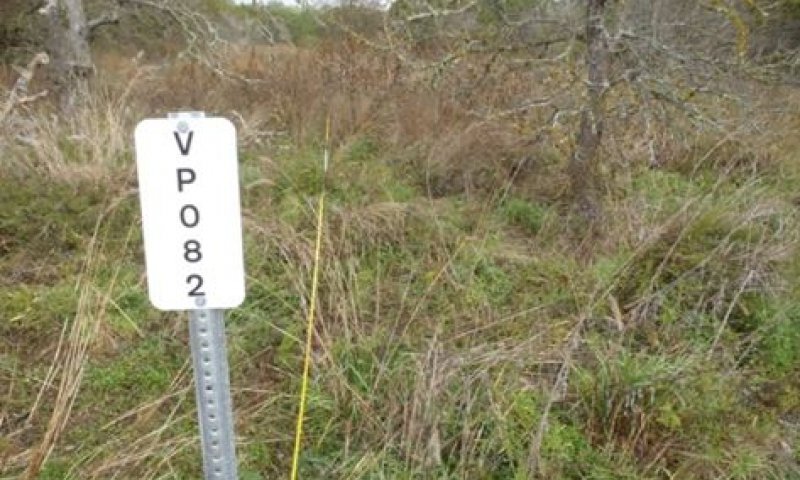
Figure 36. . Clay Loam ecological site. Bexar County
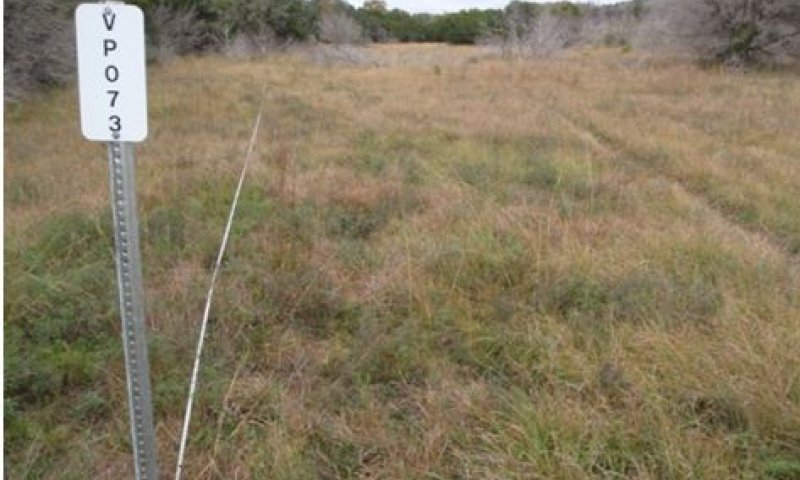
Figure 37. . Clay Loam ecological site. Bexar County
Extensive conversion of the Clay Loam ecological site to cropland (primarily cotton and corn) occurred from the mid-1800s to the early 1900s. Some remains in cropland today. While restoration of this site to a semblance of the tallgrass prairie is possible with range planting, prescribed grazing, and prescribed burning—complete restoration of the historic community in a reasonable time is very unlikely because of deterioration of the soil structure and organisms. If managerial objectives are exotic grasses, these usually consist of Introduced bluestems (Bothriochloa spp.), kleingrass (Panicum coloratum), and bermudagrass (Cynodon dactylon). The production of these species is highly variable depending upon grazing management, soil health, fertility program, and undesirable plant management. More detailed information is available in Forage Suitability Groups for exotic plants. If abandon land is not seeded and left to natural recovery, it will be doubtful the land will ever recover to any semblance of the reference plant community. Much of the soil health has been degraded and unless remedial efforts to restore the living portions of the soil, the organic matter and the humus, restoration will be difficult. Depending upon the cropping history and the length of cropping, very few remnant seeds persist. Once abandoned, early successional plants that are annuals and weak perennials establish. Over time and with the introduction of some seeds from adjacent areas, higher successional plants establish. However, the plant succession, without intervention with range plantings will probability terminate in a mesquite/baccharis/juniper woody component with prickly pear and small shrubs, and Texas wintergrass as the majority of the plant component. This will be the stable community over time. This community does stabilize the soil and provide the basic building blocks of nutrients, organic matter, and soil organisms needed to restore health. This process is estimated to take over 50 years to manifest. To accelerate the recovery, range planting along with maintenance brush management, prescribed grazing, and possibly fire are needed to restore the ecological process to heal the land.
Figure 38. Annual production by plant type (representative values) or group (midpoint values)
Table 26. Annual production by plant type
| Plant type | Low (lb/acre) |
Representative value (lb/acre) |
High (lb/acre) |
|---|---|---|---|
| Grass/Grasslike | 1750 | 2250 | 3000 |
| Shrub/Vine | 250 | 300 | 400 |
| Tree | 250 | 300 | 400 |
| Forb | 250 | 300 | 400 |
| Total | 2500 | 3150 | 4200 |
Figure 39. Plant community growth curve (percent production by month). TX3781, GoBack Land Community. Shortgrass/Mixed-brush summer growth with some cool-season grass growth. Weed and brush species may invade the site from adjacent areas..
| Jan | Feb | Mar | Apr | May | Jun | Jul | Aug | Sep | Oct | Nov | Dec |
|---|---|---|---|---|---|---|---|---|---|---|---|
| J | F | M | A | M | J | J | A | S | O | N | D |
| 3 | 3 | 7 | 13 | 20 | 15 | 7 | 5 | 10 | 7 | 5 | 5 |
Pathway 4.1A
Community 4.1 to 4.2


Tillage and farming for crops followed by abandonment triggers this shift.
Pathway 4.2A
Community 4.2 to 4.1


Range planting, maintenance brush management, prescribed grazing, and possibly fire are needed to restore the ecological processes.
State 5
Mulched State
Community 5.1
Hydromulched State

Figure 40. . Clay Loam ecological site. Bexar County
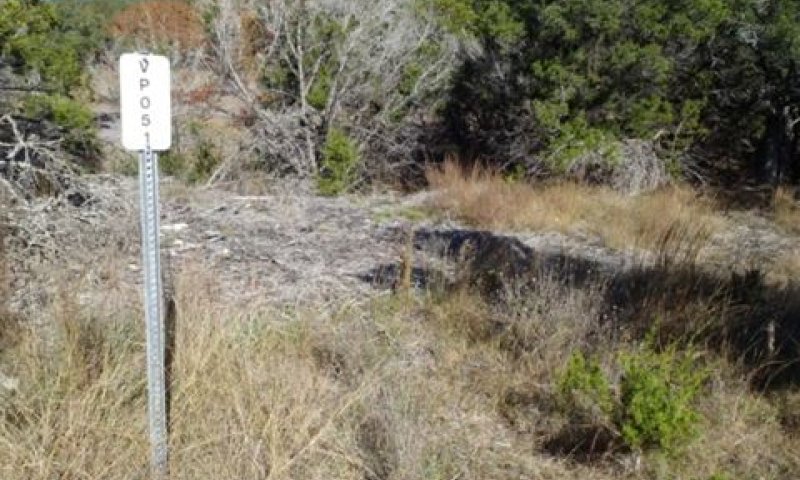
Figure 41. . Clay Loam ecological site. Bexar County
This plant community is a result of using mechanical hydro-mulching to reduce canopy and structure of dense woody species which is usually juniper. The objective of this treatment is to facilitate movement of foot soldiers and to provide protective ground cover. The amounts of mulch on the ground and the orientation of the mulch are dependent upon the amount of woody cover treated and the time since treatment. The mulch tends to settle over time and is very resistant to deterioration. This community can structurally appear very similar to the reference plant community but without the herbaceous cover. The understanding of how this plant community reacts over time is unknown but studies are currently under way to monitor. One result is that the soil is protected for a long time. There will be a need for maintenance to treat juniper and other species as they re-establish.
Figure 42. Annual production by plant type (representative values) or group (midpoint values)
Table 27. Annual production by plant type
| Plant type | Low (lb/acre) |
Representative value (lb/acre) |
High (lb/acre) |
|---|---|---|---|
| Tree | 1500 | 2250 | 3000 |
| Shrub/Vine | 300 | 450 | 600 |
| Forb | 100 | 150 | 200 |
| Grass/Grasslike | 100 | 150 | 200 |
| Total | 2000 | 3000 | 4000 |
Figure 43. Plant community growth curve (percent production by month). TX3773, Tallgrass Savannah -10-30% canopy cover. Tallgrasses with 10-30 percent canopy cover..
| Jan | Feb | Mar | Apr | May | Jun | Jul | Aug | Sep | Oct | Nov | Dec |
|---|---|---|---|---|---|---|---|---|---|---|---|
| J | F | M | A | M | J | J | A | S | O | N | D |
| 3 | 3 | 5 | 13 | 22 | 15 | 5 | 3 | 15 | 7 | 5 | 4 |
Transition T1A
State 1 to 2
Continuous season long grazing at moderate to heavy stocking with mixed classes of livestock rate suppress tall grasses. Removal of fire and the lack of brush management as well as adverse weather contribute to the change in the 1.1 plant community to the 1.2.
Transition T1B
State 1 to 3
A lack of fire, integrated brush management and abusive grazing with cattle over long periods of time (30+ years). Alterations of hydrologic cycle, mineral cycle and nutrient cycle are contributing factors. Complete destocking for several years will also lead to a similar situation.
Transition T1C
State 1 to 4
Land clearing, brush management and tillage are the primary drivers to convert land.
Restoration pathway R2A
State 2 to 1
Prescribed grazing coupled with brush management and possibly range planting to restore the ecological process of energy flow and hydrology are needed. Fire should be used strategically in the recovery process. Prescribed grazing with mixed classes of livestock coupled with fire and brush management will help manage resprouts.
Transition T2A
State 2 to 3
Removal of mixed classes of herbivory, a lack of fire and brush management along with the increase of woody plants drive this transition.
Transition T2B
State 2 to 4
Land clearing, brush management and tillage are the primary drivers to convert land.
Restoration pathway R2B
State 3 to 1
Combinations of mechanical treatment, chemical treatments, and many times range planting will be needed to restore this plant community. Prescribed grazing will also be needed. Unless fire is used, prescribed grazing with mixed livestock and brush management will be needed over time.
Transition T3B
State 3 to 4
Land clearing, brush management and tillage are the primary drivers to convert land.
Transition T3A
State 3 to 5
Mechanical hydro mulching is used to reduce canopy and understory.
Additional community tables
Table 28. Community 1.1 plant community composition
| Group | Common name | Symbol | Scientific name | Annual production (lb/acre) | Foliar cover (%) | |
|---|---|---|---|---|---|---|
|
Grass/Grasslike
|
||||||
| 1 | Tallgrasses | 2000–3000 | ||||
| little bluestem | SCSC | Schizachyrium scoparium | 1530–2550 | – | ||
| Indiangrass | SONU2 | Sorghastrum nutans | 375–500 | – | ||
| big bluestem | ANGE | Andropogon gerardii | 375–500 | – | ||
| eastern gamagrass | TRDA3 | Tripsacum dactyloides | 75–150 | – | ||
| switchgrass | PAVI2 | Panicum virgatum | 50–80 | – | ||
| 2 | Midgrasses | 400–450 | ||||
| sideoats grama | BOCU | Bouteloua curtipendula | 350–450 | – | ||
| plains lovegrass | ERIN | Eragrostis intermedia | 150–225 | – | ||
| composite dropseed | SPCOC2 | Sporobolus compositus var. compositus | 100–150 | – | ||
| Texas cupgrass | ERSE5 | Eriochloa sericea | 75–125 | – | ||
| vine mesquite | PAOB | Panicum obtusum | 75–125 | – | ||
| threeawn | ARIST | Aristida | 50–125 | – | ||
| 3 | Midgrasses | 150–225 | ||||
| silver beardgrass | BOLA2 | Bothriochloa laguroides | 150–225 | – | ||
| 4 | Short grasses | 80–100 | ||||
| curly-mesquite | HIBE | Hilaria belangeri | 80–100 | – | ||
| fall witchgrass | DICO6 | Digitaria cognata | 25–60 | – | ||
| 5 | Cool-season Grasses | 180–220 | ||||
| Texas wintergrass | NALE3 | Nassella leucotricha | 150–220 | – | ||
| cedar sedge | CAPL3 | Carex planostachys | 80–125 | – | ||
| Canada wildrye | ELCA4 | Elymus canadensis | 80–125 | – | ||
| Virginia wildrye | ELVI3 | Elymus virginicus | 80–125 | – | ||
|
Forb
|
||||||
| 6 | Forbs | 300–400 | ||||
| cedar sedge | CAPL3 | Carex planostachys | 200 | – | ||
| Canada wildrye | ELCA4 | Elymus canadensis | 200 | – | ||
| Virginia wildrye | ELVI3 | Elymus virginicus | 200 | – | ||
| Cuman ragweed | AMPS | Ambrosia psilostachya | 50–100 | – | ||
| Berlandier's sundrops | CABE6 | Calylophus berlandieri | 50–100 | – | ||
| prairie clover | DALEA | Dalea | 50–100 | – | ||
| zarzabacoa comun | DEIN3 | Desmodium incanum | 50–100 | – | ||
| bundleflower | DESMA | Desmanthus | 50–100 | – | ||
| blacksamson echinacea | ECAN2 | Echinacea angustifolia | 50–100 | – | ||
| Engelmann's daisy | ENPE4 | Engelmannia peristenia | 50–100 | – | ||
| eastern milkpea | GARE2 | Galactia regularis | 50–100 | – | ||
| Maximilian sunflower | HEMA2 | Helianthus maximiliani | 50–100 | – | ||
| trailing krameria | KRLA | Krameria lanceolata | 50–100 | – | ||
| dotted blazing star | LIPU | Liatris punctata | 50–100 | – | ||
| Nuttall's sensitive-briar | MINU6 | Mimosa nuttallii | 50–100 | – | ||
| yellow puff | NELU2 | Neptunia lutea | 50–100 | – | ||
| narrowleaf Indian breadroot | PELI10 | Pediomelum linearifolium | 50–100 | – | ||
| snoutbean | RHYNC2 | Rhynchosia | 50–100 | – | ||
| awnless bushsunflower | SICA7 | Simsia calva | 50–100 | – | ||
| fuzzybean | STROP | Strophostyles | 50–100 | – | ||
| 7 | Annual Forbs | 0–1 | ||||
| prairie broomweed | AMDR | Amphiachyris dracunculoides | 0–1 | – | ||
|
Shrub/Vine
|
||||||
| 8 | Shrubs/Vines | 80–100 | ||||
| stretchberry | FOPU2 | Forestiera pubescens | 80–100 | – | ||
| sumac | RHUS | Rhus | 80–100 | – | ||
| gum bully | SILA20 | Sideroxylon lanuginosum | 80–100 | – | ||
|
Tree
|
||||||
| 9 | Trees | 70–100 | ||||
| hackberry | CELTI | Celtis | 70–100 | – | ||
| Texas live oak | QUFU | Quercus fusiformis | 70–100 | – | ||
| elm | ULMUS | Ulmus | 70–100 | – | ||
Interpretations
Animal community
This site is suited for the production of domestic livestock and provides habitat for native wildlife and certain species of exotic wildlife. Cow-calf operations are the primary livestock enterprise although stocker cattle are also grazed. Sheep and goats were formerly raised in large numbers and are still present but in reduced numbers. Sustainable stocking rates have declined drastically over the past 100 years because of the deterioration of the historic plant community. Initial starting stocking rates should be determined with the landowner or decision maker based on the merits of the existing plants for the desired animals.
With the eradication of the screwworm fly, the increase in woody vegetation, and insufficient natural predation, white-tailed deer numbers have increased drastically and are often in excess of carrying capacity. Where deer numbers are excessive, overbrowsing and overuse of preferred forbs causes deterioration of the plant community. Progressive management of deer populations can keep populations in balance. Achieving a balance between woodland and more open plant communities on this site is an important key to deer management. Competition among deer, sheep, and goats because of diet overlap can be an important consideration in livestock and wildlife management because of damage to preferred vegetation.
Many species will utilize the clay loam site for at least a portion of their habitat needs but rely on a landscape to meet all their needs.
Smaller mammals include many kinds of rodents, jackrabbit, cottontail rabbit, raccoon, skunks, opossum, and armadillo. Mammalian predators include coyote, red fox, gray fox, bobcat, and mountain lion. Many species of snakes and lizards are native to the site.
Many species of birds are found on this site including game birds, songbirds, and birds of prey. Major game birds that are economically important are Rio Grande turkey, bobwhite quail, and mourning dove. Turkey prefers plant communities with substantial amounts of shrubs and trees interspersed with grassland. Quail prefer plant communities with a combination of low shrubs, bunch grass, bare ground, and low successional forbs. The different species of songbirds vary in their habitat preferences. Prairie chickens (Tympanuchus spp.) were also recorded in the general area. In general, a habitat that provides a diversity of grasses, forbs, shrubs, vines and trees, and a complex of grassland, savannah, shrubland, and woodland will support a variety and abundance of songbirds. Birds of prey are important to keep the numbers of rodents, rabbits, and snakes in balance. The different plant communities of the site will sustain different species of raptors.
Various kinds of exotic wildlife have been introduced on the site including axis, sika, fallow, and red deer, aoudad sheep, and blackbuck antelope. Their numbers should be managed in the same manner as livestock and white-tailed deer to prevent damage to the plant community. Feral hogs are present and can cause damage when their numbers are not managed.
Hydrological functions
State 1: Grassland Savannah – The water cycle is most functional when the site is dominated by tall bunchgrass. Very little rainfall is entrapped by the woody canopy. Rapid rainfall infiltration, high soil organic matter, good soil structure, and good porosity are present with a cover of bunchgrass. Quality of surface runoff will be high and erosion and sedimentation rates will be low. Most of the moisture absorbed in the soil is used by the herbaceous plants in the root zone. Occasionally, when there are periods of high sustained rainfall, water may percolate below the root zone but this site does not usually recharge shallow aquifers.
State 2: Shortgrass/tree – When abusive grazing causes loss or reduction of bunchgrass and ground cover, the water cycle becomes impaired. Infiltration is decreased and runoff is increased because of poor ground cover, rainfall splash, soil capping, lowered organic matter, and poor structure. Because of the very high shrink-swell clay soil and the formation of surface cracks in dry periods, rainfall infiltration can still occur even when ground cover is poor. With a combination of a sparse ground cover and intensive rainfall, this site can contribute to an increased frequency and severity of flooding within a watershed. Soil erosion is accelerated, quality of surface runoff is poor and sedimentation increases.
State 3: Shrubland/tree – As the site becomes dominated by woody species, especially oaks and juniper, the water cycle is further altered. Interception of rainfall by tree canopy is increased which reduces the amount of rainfall reaching the surface by as much as 25 percent. However, stem flow is increased, because of the funneling effect of the canopy, which increases soil moisture at the base of the tree. Increased transpiration, especially when evergreen species such as live oak and juniper dominate, provides less chance for deep percolation. As woody species increase, grass cover declines accordingly, which causes some of the same results as heavy grazing.
With a mature woodland canopy, a buildup of leaf litter occurs which increases the organic matter of the soil, builds the structure, improves infiltration, and retards erosion. Some, but not all values of a properly functioning water cycle are restored on this site when a woodland plant community persists.
State 4: Converted land – If the converted state is in productive grassland, the hydrologic characteristics resemble the reference plant community. However, if grazing has been done during wet weather or is abusive, soil compaction can prevent infiltration. This increases runoff and contributes to downstream flooding in high rainfall events.
State 5: Hydro mulched – Heavy mulch on the surface absorbs rainfall and protects the surface from raindrop impact. There is virtually no erosion or runoff. Many of the impacts of heavy mulch have yet to be measured, but the mulch stops most of the surface evaporation. Moisture is retained in the soil profile to be used by any plant protruding above the mulch.
Recreational uses
This site has the appeal of the wide open spaces. The abundant tall and mid grasses and scattered oaks produce beautiful fall color variations. The area is also used for hunting, birding and other eco-tourism related enterprises.
Wood products
Honey mesquite and oaks can be used for firewood and the specialty wood industry.
Other products
Plant Preference by Animal Kind:
This rating system provides general guidance as to animal forage preference for plant species. It also indicates possible competition and diet overlap between kinds of herbivores. Grazing preference changes from time to time, especially between seasons, and between animal kinds and classes. An animal’s preference or avoidance of certain plants is learned over time through grazing experience and maternal learning (http://extension.usu.edu/behave/Grazing). Preference does not necessarily reflect the ecological status of the plant within the plant community. For wildlife, plant preferences for food are rated. Refer to detailed habitat guides for a more complete description of a species habitat needs.
Supporting information
Inventory data references
Information presented was derived from the site’s previous Range Site Description, NRCS clipping data, literature, field observations, and personal contacts with range-trained personnel.
Other references
Anderson, J.R., C.A. Taylor, Jr., C.J. Owens, J.R. Jackson, D.K. Steele, and R. Brantley. 2013. Using experience and supplementation to increase juniper consumption by three different breeds of sheep. Rangeland Ecol. Management. 66:204-208. March.
Archer S. 1994. Woody plant encroachment into southwestern grasslands and savannas: rates, patterns and proximate causes. in: Ecological implications of livestock herbivory in the West, pp.13-68. Edited by M. Vavra, W. Laycock, R. Pieper, Society for Range Management Publication. , Denver, Colorado.
Bestelmeyer, B.T., J.R. Brown, K.M. Havsted, R. Alexander, G. Chavez, and J.E. Hedrick. 2003. Development and use of state-and-transition models for rangelands. Journal of Range Management. 56(2): 114-126.
Bushland, R.C. 1985. Eradication program in the southwestern United States. Symposium on eradication of the screwworm from the United States and Mexico. Misc. Pub. Entomol. Soc. Am., 62:12-15.
Foster, J.H. 1917. The spread of timbered areas in central Texas. Journal of Forestry 15:442-445.
Frost, C. C. 1998. Presettlement fire frequency regimes of the Unites States: a First Approximation. Tall Timbers Fire Ecology Conference Proceedings. No. 20. Tall Timbers Research Station. Tallahassee, FL.
Fuhlendorf, S. D., and Engle D.M., Kerby J., and Hamilton R. 2008. Pyric Herbivory: rewilding Landscapes through the Recoupling of Fire and Grazing. Conservation Biology. Volume 23, No. 3, 588-598.
Hamilton W. and D. Ueckert. 2005. Rangeland Woody Plant Control--Past, Present, and Future. Chapter 1 in: Brush Management-Past, Present, and Future. Texas A & M University Press. Pp.3-16.
Hanselka, W., R. Lyons, and M. Moseley. 2009. Grazing Land Stewardship – A Manual for Texas Landowners. Texas AgriLife Communications, http://agrilifebookstore.org.
Hart, C., R.T. Garland, A.C. Barr, B.B. Carpenter, and J.C. Reagor. 2003. Toxic Plants of Texas. Texas Cooperative Extension Bulletin B-6103 11-03.
Inglis, J. M. 1964. A History of Vegetation on the Rio Grande Plains. Texas Parks and Wildlife Department, Bulletin No. 45. Austin, Texas.
Massey, C.L. 2009. The founding of a town – The Gugger and Benke families. Helotes Echo, July 1, 2009.
Natural Resources Conservation Service. 1994. The Use and Management of Browse in the Edwards Plateau of Texas. Temple, Texas.
Plant symbols, common names, and scientific names according to USDA/NRCS Texas Plant List (Unpublished)
Pyne, S.J. 1982. Fire in America. Princeton University Press, Princeton, NJ.
Roemer, Ferdinand Von. 1983. Roemer’s Texas. Eakins Press.
Schmidly, D.J. 2002. Texas natural history: a century of change. Texas Tech University Press, Lubbock.
Scifres, C.J. and W.T. Hamilton. 1993. Prescribed Burning for Brush Management: The South Texas Example. Texas A & M University Press, 245 pp.
Smeins, F., S. Fuhlendorf, and C. Taylor, Jr. 1997. Environmental and Land Use Changes: A Long Term Perspective. Chapter 1 in: Juniper Symposium 1997. Texas Agricultural Experiment Station. Pp 1-21.
Taylor, C.A. (Ed.). 1997. Texas Agriculture Experiment Station Technical Report 97-1 (Proceedings of the 1997 Juniper Symposium), Sonora Texas, pp. 9-22.
Teer, J.G., J.W. Thomas, and E.A. Walker. 1965. Ecology and Management of White-tailed Deer in the Llano Basin of Texas. Wildlife Monographs 10: 1-62.
Thurow, T.O. and J.W. Hester. 1997. 1997 Juniper Symposium. Texas Agricultural Experiment Station, The Texas A&M University System. Tech. Rep. 97-1. January 9-10, 1997. San Angelo, Texas
USDA-NRCS (Formerly Soil Conservation Service) Range Site Description (1972)
Vines, R.A. 1984. Trees of Central Texas. University of Texas Press. Austin, Texas.
Weninger, D. 1984. The Explorer’s Texas. Eakin Press; Waco, Texas.
Wilcox. B.P. and T.L. Thurow. 2006. Emerging Issues in Rangeland Ecohydrology: Vegetation Change and the Water Cycle. Rangeland Ecol. Management. 59:220-224, March.
Wilcox, B.P., Y. Huang, and J.W. Walker. 2008. Long-term trends in stream flow from semiarid rangeland: uncovering drivers of change. Global Change Biology 14: 1676-1689, doi:10.1111/j.1365.2486.2008.01578.
Wilcox, B.P., W.A. Dugas, M.K. Owens, D.N Ueckert, and C.R. Hart. 2005. Shrub Control and Water Yield on Texas Rangelands: Current State of Knowledge. Texas Agricultural Experiment Station Research Report 05-1.
Wills, Frederick. 2006. Historic Vegetation of Camp Bullis and Camp Stanley, Southeastern Edwards, Plateau. Texas. Texas Journal of science. 58(3):219-230.
Wright, H.A. and A.W. Bailey. 1982. Fire Ecology: United States and Southern Canada. John Wiley & Sons, Inc.
Wu. B.X., E.J. Redeker, and T.L. Thurow. 2001. Vegetation and Water Yield Dynamics in an Edwards Plateau Watershed. Journal of Range Management. 54:98-105. March 2001.
http://extension.usu.edu/behave/Accesses July 1, 2013
Contributors
Carl Englerth
Joe D. Franklin
Mark Moseley
Travis Waiser, MLRA Leader, NRCS, Kerrville, TX
Approval
Bryan Christensen, 9/19/2023
Acknowledgments
Site Development and Testing Plan:
Future work, as described in a Project Plan, to validate the information in this Provisional Ecological Site Description is needed. This will include field activities to collect low, medium and high-intensity sampling, soil correlations, and analysis of that data. Annual field reviews should be done by soil scientists and vegetation specialists. A final field review, peer review, quality control, and quality assurance reviews of the ESD will be needed to produce the final document. Annual reviews of the Project Plan are to be conducted by the Ecological Site Technical Team.
Reviewers and Technical Contributors:
Joe Franklin, Zone Range Management Specialist, NRCS, San Angelo Zone Office, Texas
Ryan McClintock, Biologist, NRCS, San Angelo Zone Office, Texas
Jessica Jobes, Project Leader, Kerrville Soil Survey Office, NRCS, Kerrville, Texas
Travis Waiser, Soil Scientist, NRCS, Kerrville Soil Survey Office, Texas
Wayne Gabriel, Soil Data Quality Specialist, NRCS, Temple, TX
Bryan Hummel, Natural Resources Technician, Joint Base San Antonio-Camp Bullis, Texas
Ann Graham, Editor, NRCS, Temple, Texas
QC/QA completed by:
Bryan Christensen, SRESS, NRCS, Temple, TX
Erin Hourihan, ESDQS, NRCS, Temple, TX
Rangeland health reference sheet
Interpreting Indicators of Rangeland Health is a qualitative assessment protocol used to determine ecosystem condition based on benchmark characteristics described in the Reference Sheet. A suite of 17 (or more) indicators are typically considered in an assessment. The ecological site(s) representative of an assessment location must be known prior to applying the protocol and must be verified based on soils and climate. Current plant community cannot be used to identify the ecological site.
| Author(s)/participant(s) | San Angelo Zone RMS |
|---|---|
| Contact for lead author | 325-944-0147 |
| Date | 04/08/2013 |
| Approved by | Colin Walden |
| Approval date | |
| Composition (Indicators 10 and 12) based on | Annual Production |
Indicators
-
Number and extent of rills:
None. -
Presence of water flow patterns:
Some minimal flow patterns may be evident at the juncture of the associated sites. -
Number and height of erosional pedestals or terracettes:
None. -
Bare ground from Ecological Site Description or other studies (rock, litter, lichen, moss, plant canopy are not bare ground):
None. -
Number of gullies and erosion associated with gullies:
None. -
Extent of wind scoured, blowouts and/or depositional areas:
None. -
Amount of litter movement (describe size and distance expected to travel):
Little or no litter movement or deposition during normal rainfall events, rarely over 6 inches. -
Soil surface (top few mm) resistance to erosion (stability values are averages - most sites will show a range of values):
Soil surface is resistant to erosion. Stability class range is expected to be 5-6. -
Soil surface structure and SOM content (include type of structure and A-horizon color and thickness):
0 to 3.1 inches; brown (7.5YR 4/2) dry, loam; dark brown; 3.1 to 18.1 inches; dusky red (2.5YR 3/2) dry, clay;18.1 inches; very slightly effervescent by HCl -
Effect of community phase composition (relative proportion of different functional groups) and spatial distribution on infiltration and runoff:
The tallgrass/midgrass savanna with abundant forbs, adequate litter, and little bare ground provides for maximum infiltration and negligible runoff. -
Presence and thickness of compaction layer (usually none; describe soil profile features which may be mistaken for compaction on this site):
No evidence of compaction. -
Functional/Structural Groups (list in order of descending dominance by above-ground annual-production or live foliar cover using symbols: >>, >, = to indicate much greater than, greater than, and equal to):
Dominant:
Warm-season tallgrassesSub-dominant:
Warm-season midgrassesOther:
Trees Forbs Cool Season Grasses Shrubs Warm Season Short Grasses.Additional:
-
Amount of plant mortality and decadence (include which functional groups are expected to show mortality or decadence):
Perennial grasses will naturally exhibit a minor amount (less than 5%) of senescence and some mortality every year. -
Average percent litter cover (%) and depth ( in):
>90 percent litter, 0.5 to 1 inch depth. -
Expected annual annual-production (this is TOTAL above-ground annual-production, not just forage annual-production):
2800 to 4300 pounds per acre -
Potential invasive (including noxious) species (native and non-native). List species which BOTH characterize degraded states and have the potential to become a dominant or co-dominant species on the ecological site if their future establishment and growth is not actively controlled by management interventions. Species that become dominant for only one to several years (e.g., short-term response to drought or wildfire) are not invasive plants. Note that unlike other indicators, we are describing what is NOT expected in the reference state for the ecological site:
Ashe juniper, baccharis, pricklypear, yucca, tasajillo, pricklyash, lotebush, mesquite, King Ranch bluestem, silky bluestem, annual broomweed -
Perennial plant reproductive capability:
All perennial species should be capable of reproducing every year unless disrupted by extended drought, overgrazing, wildfire, insect damage, or other events occuring immediately prior to, or during the reproductive phase.
Print Options
Sections
Font
Other
The Ecosystem Dynamics Interpretive Tool is an information system framework developed by the USDA-ARS Jornada Experimental Range, USDA Natural Resources Conservation Service, and New Mexico State University.
Click on box and path labels to scroll to the respective text.
Ecosystem states
| T1A | - | Absence of disturbance and natural regeneration over time coupled with excessive grazing pressure |
|---|---|---|
| T1B | - | Absence of disturbance and natural regeneration over time |
| T1C | - | Removal of woody species, extensive soil disturbance, followed by seeding |
| R2A | - | Reintroduction of natural disturbance regimes |
| T2A | - | Absence of disturbance and natural regeneration over time |
| T2B | - | Removal of woody species, extensive soil disturbance, followed by seeding |
| R2B | - | Reintroduction of natural disturbance regimes |
| T3B | - | Removal of woody species, extensive soil disturbance, followed by seeding |
| T3A | - | Mechanical conversion of juniper to mulch |